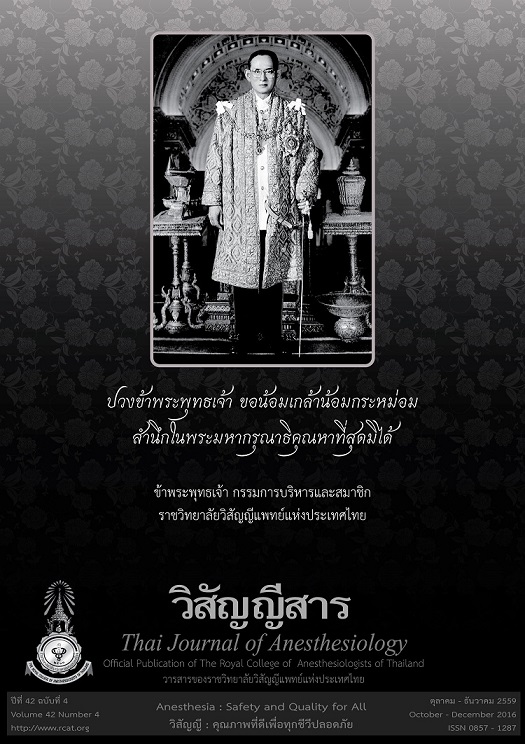Simulation-based training for hypotensive management during general anesthesia in nurse anesthetist students
Main Article Content
บทคัดย่อ
Background: Simulation has become more popular for teaching patient care, since it is easier and more effective. It helps the students increase their skills, reduce their stress and build their confidence when applying this experience to treat real patients.
Objective: To compare between theoretical teaching with simulation and theoretical teaching only for hypotensive management during general anesthesia.
Methods: 19 nurse anesthetist students were divided using prospective randomized design with repeated measurement into 2 groups, group 1 “sim before” and group 2 “sim after”. With the following sequential weekly activities. At the beginning both groups took the pretest MCQ, then received a lecture about hypotensive management during general anesthesia and pretest simulation to get baseline scores. “sim before” group received the simulation training while “sim after” group did not. At the 4th week both groups did the midtest simulation after that “sim after” group received the simulation training. At the 8th week both groups did the posttest simulation and posttest MCQ.
Results: Pretest scores were not statistically significant difference between two groups. Midtest scores of “sim before” group and posttest scores of group sim after were higher than pretest, with statistical significance. Posttest scores of “sim before” group was higher than “sim after” group, with statistical significance. Pretest MCQ and posttest MCQ were no statistically
significant scores between both groups.
Conclusion:Theoretical teaching and simulation teaching method had higher scores than theoretical teaching only in hypotensive management during general anesthesia.


